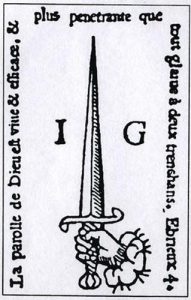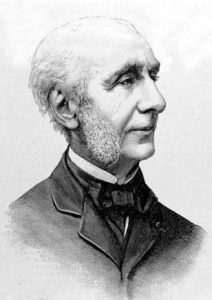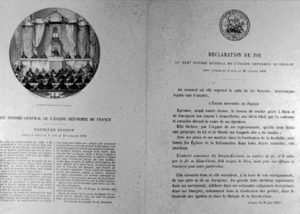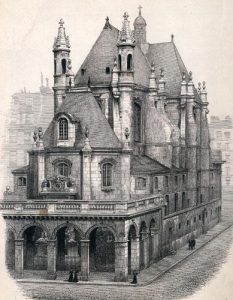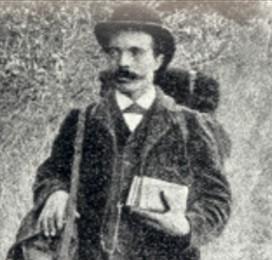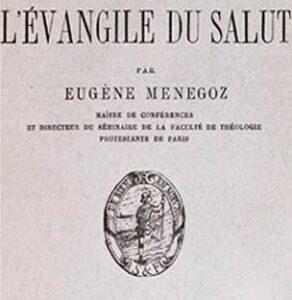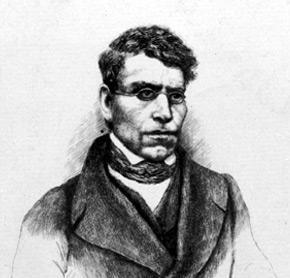The status of dogma or doctrine
For the Orthodox doctrine is relevant only in presenting the Bible’s teaching. Thus it was imposed on pastors and believers, and should not be questioned or modified. On the contrary extreme liberals wished reason to assess doctrine.
For moderate liberalism and symbolo-fideism, the doctrine expressed the believer’s experience of meeting with God. The doctrine is relative, and evolving as experience changes with the context, and takes various forms according to each individual. Thus it was out of the question to make them mandatory.
The liberals reproached the orthodox with not respecting the freedom of the believer and wishing to trap God and spiritual life in rigid formulas. The orthodox reproached the liberals with modifying, alterating and sometimes abandoning evangelical teachings.
The link between Church and State
In the 19th century almost all over Europe, Churches were state funded and were more or less closely linked to it.
The Revival movements deemed this situation abnormal. We are not Christians, they said, as we are born citizens, but through personal experience. A lively and faithful church is composed of people who are convinced ; it obeys Christ’s rules, and cannot depend on civil authorities. To the idea of a Church of the people is opposed the idea of a church of professors, and to a civil-servant pastor, a missionary pastor. Under Alexande Vinet’s influence “free” churches were created in Switzerland and in France, that means separate from the State and from official Churches.
Contrary to the Orthodox, the liberals wish to keep the link with the State either out of principles -because the State must support churches-, or because of the context -to prevent small groups from ruling parishes.
Who is a member of the Church ?
The conflict resulted from two factors and concerned the conditions to be a member of a reformed church, and especially to be an elector, as presbyteral councils and synods were elected.
As for the liberals, anyone could become a member of the Church. As for the orthodox a member was someone who had adopted the confession of faith, a text that sums up the doctrine of the Church. For the Revivalists being a member of the church meant having experienced conversion and being a « revived » Christian.
The conflict was even more acute as the majority in synods changed according to the chosen definition.
The status of the Bible
The Orthodox consider the Bible a teaching book given by God. They think a non-believer who could faithfully explain its message would be a good theologian by exposing the true Christian doctrine.
The Revivalists strongly responded to this. The Bible is a living and true word when, through the workings of the Holy Spirit, it touches the reader and suscitates a spiritual experience.
Most liberals adopt the historico-critical exegesis which considers biblical writings as a sum of historical documents often distorting the facts. Bible criticism must make the difference between the words Jesus actually said from those attributed to him, thus extracting the true evangelical message.
The orthodox accuse the historico-critical method of nullifying the Bible’s message. The Revivalists blame it for inducing an intellectual study instead of a believing and existential reading of the texts.
After 1850 the Revue de Strasbourg launched by Edouard Reuss and Timothée Colani circulated texts of German historico-critical exegetes. Some of their co-workers, like Albert Réville and Edmond Scherer contributed articles causing scandals. In 1854, Edmond de Pressensé launched the Revue chrétienne opened to the orthodox and moderate liberals, thus rejecting extreme points of view.
Confrontations
These conflicts caused severe confrontations :
- Revival preachers were often confronted to hostile pastors and classical parishes. Whole communities were driven away by stone throwings.
- Pastors touched by the Revival encountered difficulties, Adolphe Monod for instance destituted from his parish in Lyon because he refused to give the Holy Eucharist to protestants he considered not converted.
- Liberal pastors also had some difficulties, a pastor to be Athanase Coquerel junior, who replaced a pastor unable to practice his ministry, was not renewed in his function. The Société des missions refused applications from “liberals” even moderate ones such as A.N. Bertrand and A. Schweitzer.
- Dissident parishes were created, the best known was the Taitbout chapel in Paris. In 1849 fourteen of these parishes became united and held their first synod of the free Churches, separated from the State.
The 1872 synod
It was the first official national synod of the reformed Churches which had been meting since 1659. Its two aims were to solve the problem of the confession of faith, and of the elector member.
The orthodox were the majority and by 61 votes against 45 passed a Déclaration de foi (Apostles’ creed) written by Charles Bois. The liberals were more worried about the use of this Apostles’ creed than by its wording, namely would it have to be undersigned to become a pastor or a member of the Reformed Church ?
Severe debates led to a sescession. The liberal minority left the national synod after the vote on the Apostles’ creed. As it was not stipulated in the texts concerning the organisation of reformed worshipping, the decisions of the synod could not be enforced. In 1879 the orthodox organised an unofficial synod.
In 1905 after the schism between Church and State, several reformed Churches united, but in 1938 a vast majority of reformed joined to create the Eglise Réformée de France.

